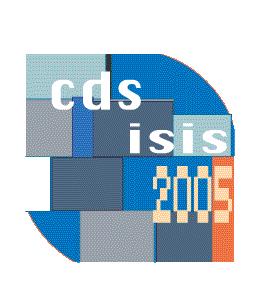This presentation will summarize the different international initatives around UNESCO-IsisMarc's product, the history of UIS contribution, and the development process under the hole idea reserved for an Open Source project. We'll expose the different contributions from all around the world related to requirements, documentation, connectivity and interoperability inherent to MARC format that IsisMarc implements.
UNESCO-IsisMarc's actually use d as a cataloging “module” for Isis and no-Isis based Integrated Library Systems (ILS). Will be exposed some of the ways for doing interoperability possible, based in the experience of Open Marco Polo's Open ILS or Physics Library at La Plata University. At this track also will be presented adittional features added in 1.54 version and will be discussed other features proposed as authority control (for adding or updating) or the posibilty of using dictionaries for completing the functionality of IsisMarc as a cataloging module “full” interoperable with MARC based Library Systems.
The working group for UNESCO-Isis Marc has contributed with french and portuguese translations. Also serves as beta tester for new features as MARC21 export or Z39.50 protocol. The portuguese group also has rewritten manuals in local language and also contributed with adittional documentation for learning IsisMarc and all its databases components. All of this contributions tends to generate a true Open Source project, with different personal roles assigned under the coordination of UNESCO for avoiding overlapped or duplicated efforts.
Also will be exposed new features proposed locally by UIS, related to the use of UNESCO IsisMarc as a practice tool fo r learning MARC format. A prototype will be shown that could work in “learning mode” specially prepared for UIS-MARC21 distance learning courses. This prototype admits that the student receives new exercises (for example by mail or downloading from an e-campus), turn IsisMarc in learning mode, cataloging the proposed exercise and IsisMarc's learning parser will offer the structural differences between catalogued and correct record.
All of this different initatives, will try to show the way that an Isis tool, originally created by UNESCO could grown by their own ways, based on individual efforts, reserving a place for everyone that wants to contribute and obtain cooperatively a better open and free product.

